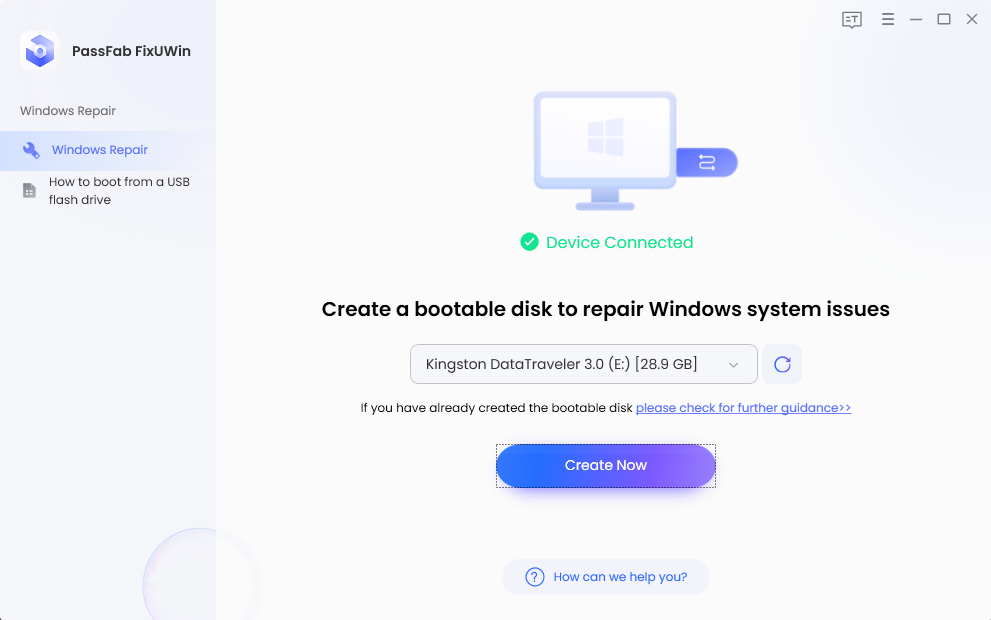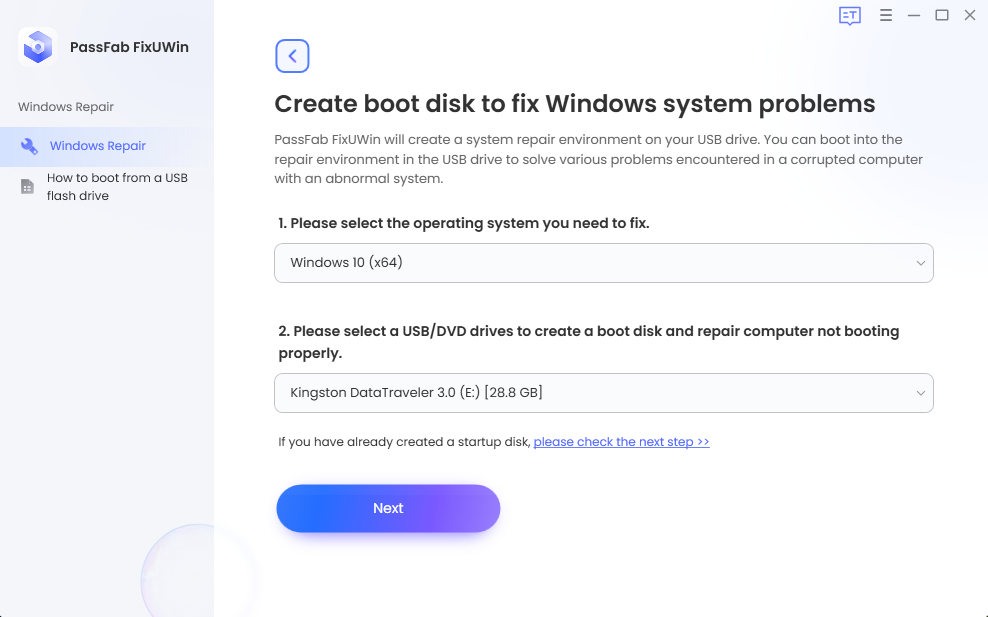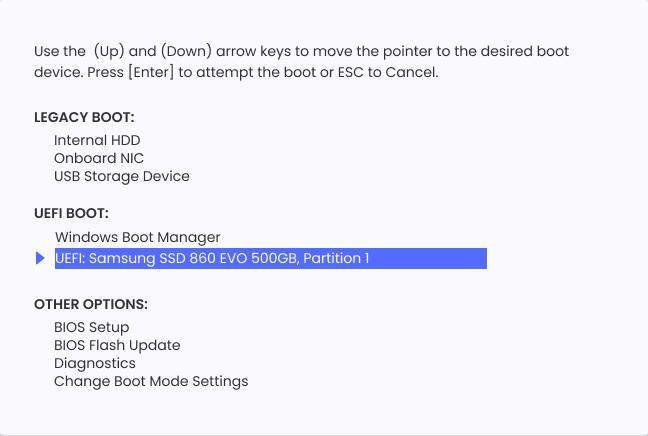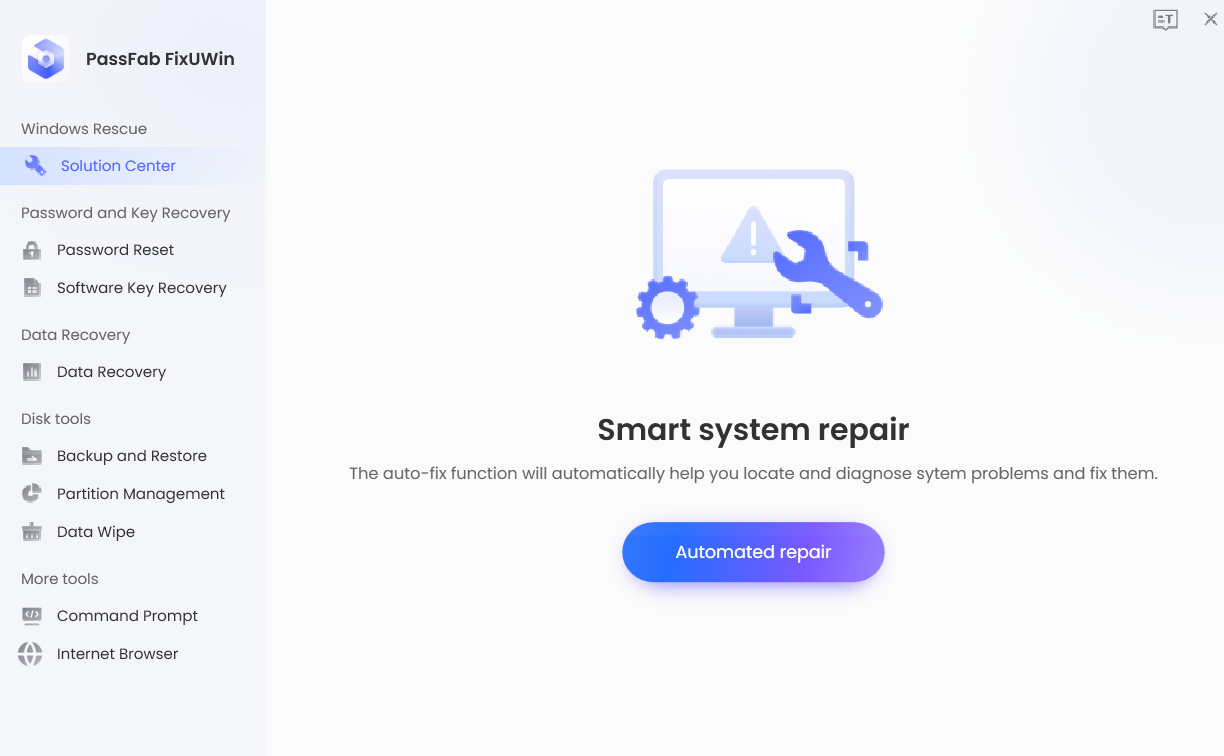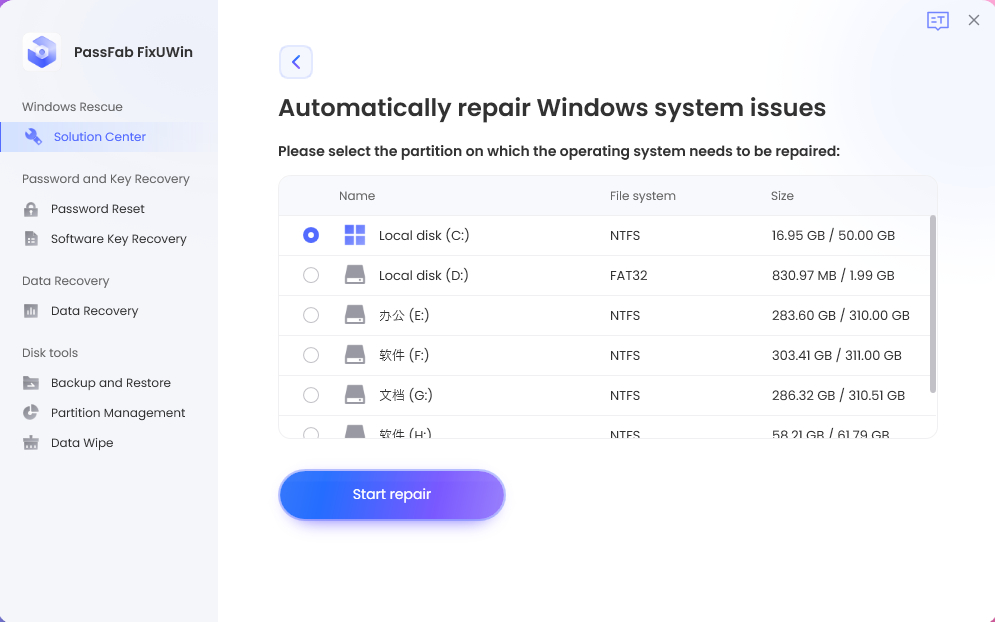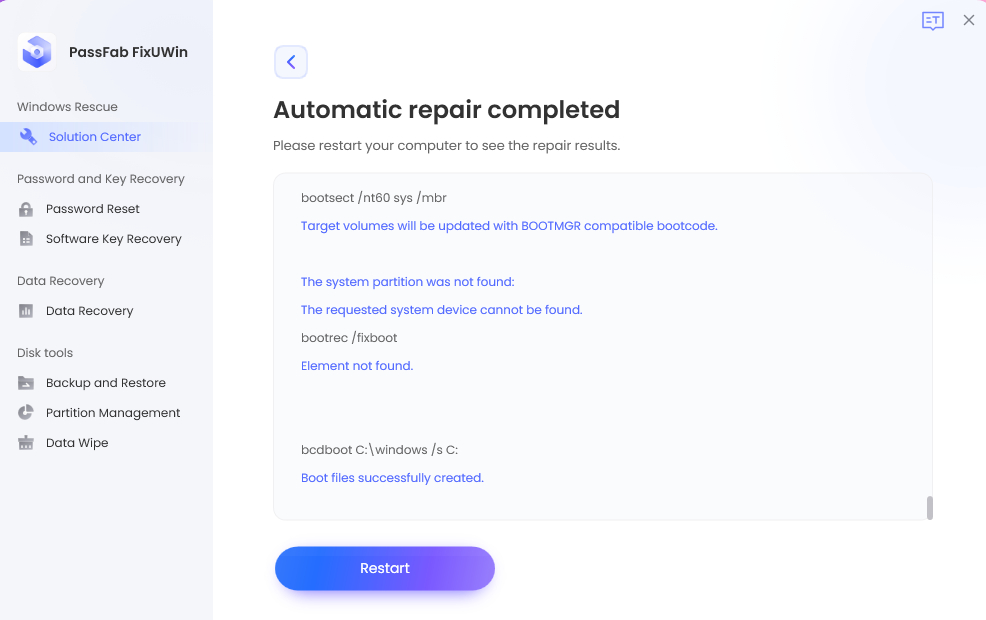Have you ever received a PC notice saying restart to repair drive errors? Even after restarting your computer, seeing the same warning appear repeatedly might be aggravating. Your workflow may be hampered by this annoying problem, which also makes you wonder about the system's overall health. You're not the only one who is considering how to solve this issue successfully.
Many people are struggling with restart to repair drive errors keep showing up after reboot, as can be seen in Microsoft Community
This article will explain what the Restart to Repair Drive Error is, why it persists, and different fixes.
Part 1. What is Restart to Repair Drive Error?
Part 2. Why does my PC keep having drive errors?
Part 3. Basic check for restart to repair drive errors
Part 4. Advanced solutions for restart to repair drive errors
- 1. Smart repair with Windows boot-up solution tool
- 2. Perform DISM scan
- 3. Perform SFC scan
- 4. Run startup repair
- 5. Perform system restore
FAQs
Part 1. What is Restart to Repair Drive Error?
Windows 10 comes with a built-in tool called restart your pc to repair drive errors that automatically detects and fixes any disc issues. The operating system alerts the user to restart the computer if a disc error is found in order to resolve the problem. This is a built-in function intended to do a "chkdsk" (Check Disc) scan automatically when the computer boots up. Chkdsk looks for faults, faulty sectors, and file system problems on the disc and tries to fix them.
Part 2. Why does my PC keep having drive errors?
There are a few possible reasons why you getting restart pc to repair drive errors. Let's take a look at them.
Corrupted File System: Storage drive file system corruption from unexpected shutdowns or power outages disrupts data structure.
Physical problems with your hard drive: A physical problem with your hard drive, such as a bad sector or a failing drive.
Malfunctioning software: Malfunctioning software, outdated drivers, or malicious programs can disrupt storage drive functionality, causing errors.
Fragmented or Overloaded Drive: A fragmented drive or insufficient free space can also contribute to recurring errors.
Part 3. Basic check for restart to repair drive errors
Restarting your computer is the first thing you should do if you see the notice restart to repair drive errors windows 10. Let's review some fundamental checks before moving on to harder ones: You may do a quick check on your hard disk if that doesn't work.
1. Restart your pc
In some cases, a quick restart might fix small issues.This may seem like a simple step, but it can often fix minor problems with your hard drive.
2. Check the hard drive
- Open File Explorer.
- To check a drive, right-click it and choose Properties.
- On the Tools tab, click.
- Click Check under "Error checking."
The system will check the drive for errors and make an effort to correct any problems it discovers.
Part 4. Advanced solutions for restart to repair drive errors
While simple tests are an excellent place to start, repeated drive errors sometimes need the use of more complex solutions. These complex procedures probe your system's inner workings in an effort to find and address any underlying problems that could be causing the recurring restart pc to repair drive errors warning.
Check them out how to fix restart to repair drive errors.
1. Smart repair with Windows boot-up solution tool
You already know the inconvenience it can be if your Windows boot-up procedure has ever had issues. Fortunately, there is a solution program that may make it simple and quick. PassFab Fixuwin is a powerful Windows repair tool that can help you fix this problem. It can scan your hard drive for errors and repair them, as well as repair your boot files.
- Download and launch Passfab Fixuwin. After that, get a USB ready to plug into your computer. Then click create boot Disk now after opening the tool.

- Select your boot media and click Next.

- Use a USB drive to start your computer. When the computer has restarted, press F12, F9, or ESC to get to the Boot Menu.

- Find your inserted USB drive, DVD, or CD in the list, then choose it as your boot drive by pressing the "enter" key.
- Launch the USB-connected program and choose "Automated Repair."

- Choose the damaged computer partition and press "Start Repair."

- After the repair is complete, choose "Restart" to restart the computer.

2.Perform dism scan
A highly efficient tool for fixing issues with your Windows image is DISM scan. It can resolve a number of issues like restart to repair drive errors keep showing up after reboot , boot issues, missing drivers, and damaged files.
Step 1: Launch Command Prompt as an administrator.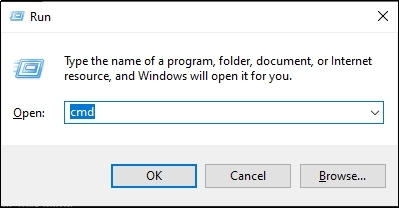
Step 2: Type and hit Enter after the following command:
Cleanup-Image / CheckHealth / DISM / Online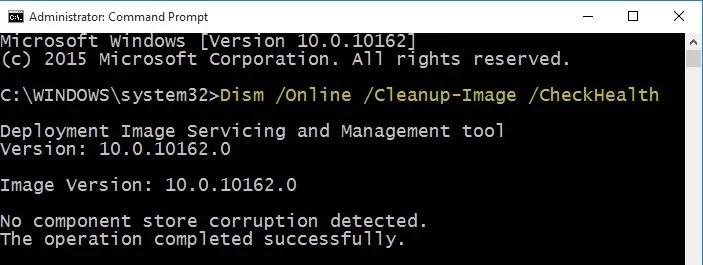
Step 3: By entering the following command and clicking Enter, you can attempt to fix any problems the command returns:
DISM /Online /Cleanup-Image /RestoreHealth
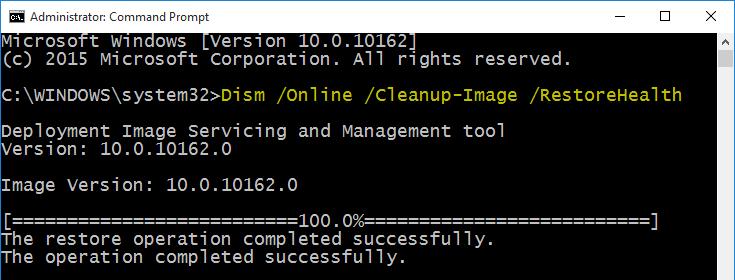
3.Perform sfc scan
The SFC scan is a powerful tool for fixing damaged system files. Incorrect file permissions, missing or damaged system files, registry problems, and other issues can all be resolved by it.
Step 1: Launch Command Prompt as an administrator.
Step 2: Enter the following command after you type it.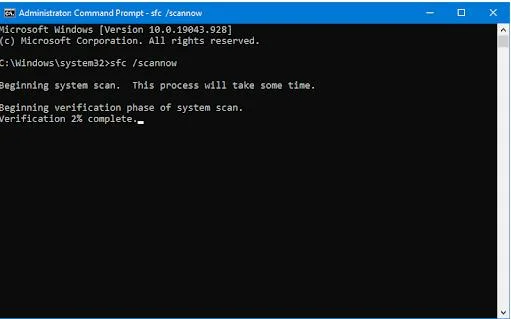
The command will try to fix any errors if any are received.
4.Run startup repair
A highly efficient tool for fixing common issues that stop Windows from starting up correctly is Startup Repair. Use Startup Repair to resolve the problem if your computer won't properly boot up. Follow these steps to launch Startup Repair for fixing restart to repair drive errors not working:
Step 1: Restart your computer, then repeatedly hit the F8 key once you see the Windows logo. The Advanced Boot Options menu will appear as a result.
Step 2: Select Startup Repair using the arrow keys, then hit Enter.
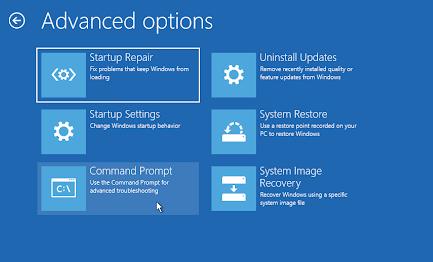
Step 3: Startup Repair will search for issues on your computer and make an effort to fix them. Your computer will display a notice with further information if Startup Repair is unable to fix it.
5.Perform system restore
You may restore your system to a previous state with System Restore. After installing new software or drivers, if Restart to Repair Drive Errors appears, you may use System Restore to reverse the modifications. Observe these steps to do a system restore:
Step 1: Launch your computer and type "Create a restore point" into the search box.
Step 2: To continue, click System Restore. Next, choose the restoration point to which you want to go back, and click the Next button.

FAQs
Q1. How do I fix hard drive errors?
Perform disk checks using built-in tools like chkdsk. If that doesn't work, utilise third-party applications like Passfab fixuwin, which may assist you in resolving 200+ window and computer errors with only a few clicks.
Q2. Why do I keep getting restart to repair drive errors?
Multiple restarts to repair drive errors may be caused by hardware issues, software issues, or malware or viruses. To ensure your computer is not affected, run a full virus scan and malware check, and check for corrupted files.
Q3. Does repairing disk errors work?
Definitely when done correctly, fixing disk defects may be highly successful. This procedure tries to fix problems with your storage disk, improving both the system's overall performance and functionality. To ensure complete and fruitful outcomes, it may be important to obtain expert solution assistance for more complicated issues, such as PassFab fixuwin.
Final Verdict
Throughout this article, we've explored ways to fix the restart to repair drive errors issue. We've covered various methods to help you, from simple checks to more advanced solutions. One option is to run software like PassFab Fixuwin, which can help diagnose and fix the problem. It's like a special tool that can help with many complex windows and computer errors to fix.
